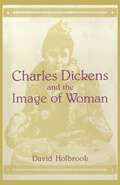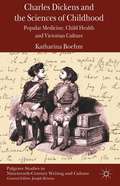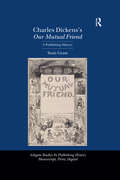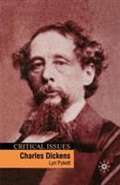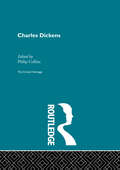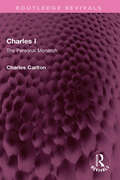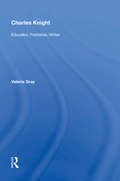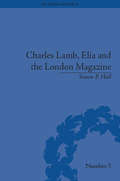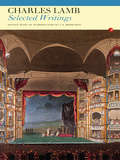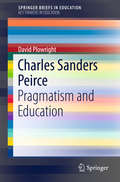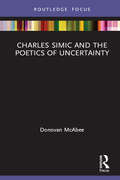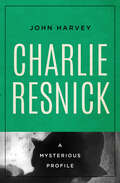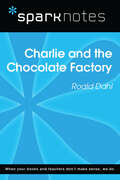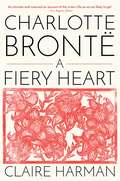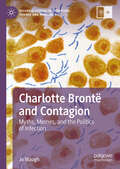- Table View
- List View
Charles Dickens and the Image of Women
by David K. HolbrookHow successful is Dickens in his portrayal of women? Dickens has been represented (along with William Blake and D.H. Lawrence) as one who championed the life of the emotions often associated with the "feminine." Yet some of his most important heroines are totally submissive and docile. Dickens, of course, had to accept the conventions of his time. It is obvious, argues Holbrook, that Dickens idealized the father-daughter relationship, and indeed, any such relationship that was unsexual, like that of Tom Pinch and his sister-but why? Why, for example, is the image of woman so often associated with death, as in Great Expectations? Dickens's own struggles over relationships with women have been documented, but much less has been said about the unconscious elements behind these problems. Using recent developements in psychoanalytic object-relations theory, David Holbrook offers new insight into the way in which the novels of Dickens-particularly Bleak House, Little Dorrit, and Great Expectations-both uphold emotional needs and at the same time represent the limits of his view of women and that of his time.
Charles Dickens and the Image of Women (Open Access Lib And Hc Ser.)
by David K. HolbrookHow successful is Dickens in his portrayal of women? Dickens has been represented (along with William Blake and D.H. Lawrence) as one who championed the life of the emotions often associated with the "feminine." Yet some of his most important heroines are totally submissive and docile. Dickens, of course, had to accept the conventions of his time. It is obvious, argues Holbrook, that Dickens idealized the father-daughter relationship, and indeed, any such relationship that was unsexual, like that of Tom Pinch and his sister—but why? Why, for example, is the image of woman so often associated with death, as in Great Expectations? Dickens's own struggles over relationships with women have been documented, but much less has been said about the unconscious elements behind these problems. Using recent developements in psychoanalytic object-relations theory, David Holbrook offers new insight into the way in which the novels of Dickens—particularly Bleak House, Little Dorrit, and Great Expectations—both uphold emotional needs and at the same time represent the limits of his view of women and that of his time.
Charles Dickens and the Sciences of Childhood
by Katharina BoehmThe first in-depth study of Dickens's creative engagement with popular science and medicine, this book brings to light the scientific entertainments, shows and institutions, and the material and print cultures that revolutionized the ways in which Victorian audiences encountered childhood. It explores Dickens's literary and journalistic writings, his private interests and public causes across the span of his long career. In doing so, it offers a new way of understanding Dickens's preoccupation with childhood by showing how his fascination with novel scientific ideas about childhood and with new practices of scientific inquiry shaped the development of his narrative techniques and aesthetic imagination. Drawing on fascinating archival material, this book reconstructs Dickens's experience of mesmerist trials and hospital ward tours, anatomical museums and popular scientific performances. It provides new readings of some of Dickens's most famous works, including Oliver Twist, Dombey and Son and Our Mutual Friend, as well as of lesser-known texts. Dickens's child characters were a source of inspiration to many medical writers, institutions and journalists, and the book also traces how these groups appropriated Dickensian characters and motifs in order to debate and bolster the authority of new scientific ideas.
Charles Dickens and the Victorian Child: Romanticizing and Socializing the Imperfect Child (Children's Literature and Culture)
by Amberyl MalkovichThis book explores the ideas of children and childhood, and the construct of the ‘ideal’ Victorian child, that developed rapidly over the Victorian era along with literacy and reading material for the emerging mass reading public. Children’s Literature was one of the developing areas for publishers and readers alike, yet this did not stop the reading public from bringing home works not expressly intended for children and reading to their family. Within the idealized middle class family circle, authors such as Charles Dickens were read and appreciated by members of all ages. By examining some of Dickens’s works that contain the imperfect child, and placing them alongside works by Kingsley, MacDonald, Stretton, Rossetti, and Nesbit, Malkovich considers the construction, romanticization, and socialization of the Victorian child within work read by and for children during the Victorian Era and early Edwardian period. These authors use elements of religion, death, irony, fairy worlds, gender, and class to illustrate the need for the ideal child and yet the impossibility of such a construct. Malkovich contends that the ‘imperfect’ child more readily reflects reality, whereas the ‘ideal’ child reflects an unattainable fantasy and while debates rage over how to define children’s literature, such children, though somewhat changed, can still be found in the most popular of literatures read by children contemporarily.
Charles Dickens as an Agent of Change
Sixteen scholars from across the globe come together in Charles Dickens as an Agent of Change to show how Dickens was (and still is) the consummate change agent. His works, bursting with restless energy in the Inimitable's protean style, registered and commented on the ongoing changes in the Victorian world while the Victorians' fictional and factional worlds kept (and keep) changing. The essays from notable Dickens scholars—Malcolm Andrews, Matthias Bauer, Joel J. Brattin, Doris Feldmann, Herbert Foltinek, Robert Heaman, Michael Hollington, Bert Hornback, Norbert Lennartz, Chris Louttit, Jerome Meckier, Nancy Aycock Metz, David Paroissien, Christopher Pittard, and Robert Tracy—suggest the many ways in which the notion of change has found entry into and is negotiated in Dickens' works through four aspects: social change, political and ideological change, literary change, and cultural change. An afterword by the late Edgar Rosenberg adds a personal account of how Dickens changed the life of one eminent Dickensian.
Charles Dickens in Context
by Sally Ledger Holly FurneauxCharles Dickens, a man so representative of his age as to have become considered synonymous with it, demands to be read in context. This book illuminates the worlds - social, political, economic and artistic - in which Dickens worked. Dickens's professional life encompassed work as a novelist, journalist, editor, public reader and passionate advocate of social reform. This volume offers a detailed treatment of Dickens in each of these roles, exploring the central features of Dickens's age, work and legacy, and uncovering sometimes surprising faces of the man and of the range of Dickens industries. Through 45 digestible short chapters written by a leading expert on each topic, a rounded picture emerges of Dickens's engagement with his time, the influence of his works and the ways he has been read, adapted and re-imagined from the nineteenth century to the present.
Charles Dickens's Great Expectations: A Cultural Life, 1860–2012 (Ashgate Studies In Publishing History: Manuscript, Print, Digital Ser.)
by Mary HammondGreat Expectations has had a long, active and sometimes surprising life since its first serialized appearance in All the Year Round between 1 December 1860 and 3 August 1861. In this new publishing and reception history, Mary Hammond demonstrates that while Dickens’s thirteenth novel can tell us a great deal about the dynamic mid-Victorian moment into which it was born, its afterlife beyond the nineteenth-century Anglophone world reveals the full extent of its versatility. Re-assessing generations of Dickens scholarship and using newly discovered archival material, Hammond covers the formative history of Great Expectations' early years, analyses the extent and significance of its global reach, and explores the ways in which it has functioned as literature and stage, TV, film and radio drama from its first appearance to the latest film version of 2012. Appendices include contemporary reviews and comprehensive bibliographies of adaptations and translations. The book is a rich resource for scholars and students of Dickens; of comparative literature; and of publishing, readership, and media history.
Charles Dickens's Our Mutual Friend: A Publishing History (Studies in Publishing History: Manuscript, Print, Digital)
by Sean GrassEven within the context of Charles Dickens's history as a publishing innovator, Our Mutual Friend is notable for what it reveals about Dickens as an author and about Victorian publishing. Marking Dickens's return to the monthly number format after nearly a decade of writing fiction designed for weekly publication in All the Year Round, Our Mutual Friend emerged against the backdrop of his failing health, troubled relationship with Ellen Ternan, and declining reputation among contemporary critics. In his subtly argued publishing history, Sean Grass shows how these difficulties combined to make Our Mutual Friend an extraordinarily odd novel, no less in its contents and unusually heavy revisions than in its marketing by Chapman and Hall, its transformation from a serial into British and U.S. book editions, its contemporary reception by readers and reviewers, and its delightfully uneven reputation among critics in the 150 years since Dickens’s death. Enhanced by four appendices that offer contemporary accounts of the Staplehurst railway accident, information on archival materials, transcripts of all of the contemporary reviews, and a select bibliography of editions, Grass’s book shows why this last of Dickens’s finished novels continues to intrigue its readers and critics.
Charles Dickens: Critical Issues (Critical Issues Ser.)
by Lyn PykettTo many of his contemporaries, Charles Dickens was the greatest writer of his age; a one-man fiction industry who produced fourteen massive novels, and numerous sketches, essays and stories, many of which appeared in the two magazines which he founded and edited. Today the work of one of the first and most successful mass-circulation authors continues to enthrall readers around the world. This wide-ranging book examines the writings of Dickens, not only in his time but also in ours. it looks at the author as a Victorian 'man of letters', and explores his cultural and critical impact both on the definition of the novel in the nineteenth century and the subsequent development of the form in the twentieth. Lyn Pykett focuses on Dickens as journalist, literary entrepreneur, the conductor of magazines, the shaper of the serial novel, the manipulator of the multiple plot, and the creator of eccentric characters. She also assesses the modernity of the writer's alienated protagonists and their social environments, as well as reassessing his representations of the vivid, bleak and at times menacing spectacle of the metropolis, from the late modern/postmodern perspective of the twenty first century. Each chapter of this text analyses the work of a particular decade in Dickens's career, providing a lively contextual study which places his writings in relation to the worlds that made him, and the literary worlds which he made. It is essential reading for all those with an interest in one of the most popular, and enduring, British novelists of all time.
Charles Dickens: The Complete Novels in One Sitting (RP Minis)
by Joelle HerrCelebrate the bicentennial birthday of Charles Dickens with this Miniature Edition packed with witty summaries of the novels of one of history's most beloved storytellers. All fans of great literature can enjoy these perfectly portable renditions of "Oliver Twist, A Christmas Carol, Great Expectations, A Tale of Two Cities," and all the Dickensian classics. Featuring synopses, character profiles, and illustrations, this mini book brings to life twenty classic tales and the iconic characters that populate the world of Dickens.
Charles Dickens: The Critical Heritage (Critical Heritage Ser.)
by Philip CollinsThe Critical Heritage gathers together a large body of critical sources on major figures in literature. Each volume presents contemporary responses to a writer's work, enabling students and researchers to read for themselves, for example, comments on early performances of Shakespeare's plays, or reactions to the first publication of Jane Austen's novels.The carefully selected sources range from landmark essays in the history of criticism to journalism and contemporary opinion, and little published documentary material such as letters and diaries. Significant pieces of criticism from later periods are also included, in order to demonstrate the fluctuations in an author's reputation.Each volume contains an introduction to the writer's published works, a selected bibliography, and an index of works, authors and subjects.The Collected Critical Heritage set will be available as a set of 68 volumes and the series will also be available in mini sets selected by period (in slipcase boxes) and as individual volumes.
Charles Godfrey Leland and His Magical Tales (Series in Fairy-Tale Studies)
by Jack ZipesBorn into a wealthy and privileged family in Philadelphia, Charles Godfrey Leland (1824–1903) showed a clear interest in the supernatural and occult literature during his youth. Legend has it that, soon after his birth, an old Dutch nurse carried him up to the garret of the house and performed a ritual to guarantee that Leland would be fortunate in his life and eventually become a scholar and a wizard. Whether or not this incident ever occurred, we do know that his interest in fairy tales, folklore, and the supernatural would eventually lead him to a life of travel and documentation of the stories of numerous groups across the United States and Europe. Jack Zipes selected the tales in Charles Godfrey Leland and His Magical Talesfrom five different books— The Algonquin Legends (1884), Legends of Florence (1895–96), The Unpublished Letters of Virgil (1901), The English Gypsies (1882), and Gypsy Sorcery and Fortune-Telling (1891)—and has arranged them thematically. Though these tales cannot be considered authentic folk tales—not written verbatim from the lips of Romani, Native Americans, or other sources of the tales—they are highly significant because of their historical and cultural value. Like most of the aspiring American folklorists of his time, who were mainly all white, male, and from the middle classes, Leland recorded these tales in personal encounters with his informants or collected them from friends and acquaintances, before grooming them for publication so that they became translations of the original narratives. What distinguishes Leland from the major folklorists of the nineteenth century is his literary embellishment to represent his particular regard for their poetry, purity, and history. Readers with an interest in folklore, oral tradition, and nineteenth-century literature will value this curated and annotated glimpse into a breadth of work.
Charles I: The Personal Monarch (Routledge Revivals)
by Charles CarltonFirst published in 1995, Charles I is a psychological portrait of the ‘monarch of the Civil Wars,’ Charles I. Challenging conventional interpretations of the king, as well as questioning orthodox historical assumptions concerning the origins and development of the Civil Wars, the book establishes itself as a definitive biography. Addressing and analysing the furious historiographical debates which have surrounded the period, Carlton offers a fresh and lucid perspective. This book will be of interest to students of literature and history.
Charles Johnson's "General History of the Pyrates" and Global Commerce (Transits: Literature, Thought & Culture, 1650-1850)
by Noel ChevalierA bestseller upon its publication in 1724, Charles Johnson’s General History of the Pyrates shaped public perceptions of piracy with its portraits of such legendary figures as Blackbeard, Mary Read, Anne Bonny, and Bartholomew Roberts. Yet despite influencing everything from Treasure Island to Peter Pan, Johnson’s book has yet to be taken seriously as a literary work in its own right. This study explores how General History of the Pyrates was at the heart of early eighteenth-century British debates about commerce, colonialism, and law. Examining how pirates are depicted as both monsters and Great Men, Noel Chevalier untangles the contradictions within a Britain emerging as a colonial superpower, where ruthlessness and ambition were both feared and praised. Traveling the high seas to plunder treasure from foreign lands, pirates were not so different from the British capitalists who built fortunes from resource extraction, the plantation economy, and the transatlantic slave trade. Connecting the work to later books like Gulliver’s Travels and The Beggar’s Opera that satirized the era and its power-hungry prime minister Robert Walpole, Chevalier shows how the pirate became an iconic figure in 1720s Britain, a time of cold-hearted capitalism and rapacious colonial expansion.
Charles Knight: Educator, Publisher, Writer (The\nineteenth Century Ser.)
by Valerie GrayCharles Knight: Educator, Publisher, Writer is the first modern book-length study of this important nineteenth-century educational reformer, author, and publisher. Though he made significant contributions during his lifetime to the cause of popular education, providing inexpensive but quality reading material for the newly literate working classes, Knight has been largely ignored by scholars. This neglect, the author suggests, may be related to Knight's association with the controversial Society for the Diffusion of Useful Knowledge and to the use scholars make of Knight's Penny Magazine and his two volumes on political economy to support their arguments on theories of social control and other issues. The author argues that Knight's reputation has suffered as a result. She reexamines the evidence to offer fresh assessments of Knight's life and work that illuminate his genuine achievements. She concludes with an evaluation of Knight's role as an innovative publisher who used the latest techniques to provide the emerging mass readership with unique combinations of text and image in his many 'pictorial' books and periodicals.
Charles Lamb, Elia and the London Magazine: Metropolitan Muse (The History of the Book #5)
by Simon P HullThe inherent 'metropolitanism' of writing for a Romantic-era periodical is here explored through the Elia articles that Charles Lamb wrote for the London Magazine.
Charles Lamb: Selected Writings (Fyfield Bks.)
by Charles LambCharles Lamb (1775-1834), essayist, poet, humorist, critic and letter-writer, has an enduring reputation for his early "Tales from Shakespeare" (1807), written in collaboration with his sister Mary, and his " Essays of Elia," first published in the "London Magazine." This thematic selection of Lamb's writings - essays, dramatic criticism, verse and
Charles Sanders Peirce: Pragmatism and Education (SpringerBriefs in Education)
by David PlowrightThis book introduces a number of selected ideas from the work of Charles Sanders Peirce, the founder of pragmatism. Peirce, pronounced 'purse', was born in America in 1839 and died in 1914. He published little in his own lifetime and he continually struggled to become recognised as a respected author with ideas that were highly creative, original and unique. The book begins with an examination of Peirce's life history. This is followed by an explanation of pragmatism, which states that an understanding of a concept can only be fully grasped by knowing what its practical effects are. The author then explains a number of Peirce's ideas that are based on his pragmatic maxim: · scientific inquiry as a method of investigation and its relevance to everyday thinking · inferential thinking based on abduction, deduction and induction and its use in educational research · semiotics, the study of signs and its relevance to the development of conceptual understanding · his profound and insightful ontological categories of Firstness, Secondness and Thirdness and their application to developing an understanding of the world around us This introductory text is written in a clear and accessible style. Numerous examples are used throughout the book to illustrate Peirce's complex and sophisticated ideas and to show how his thinking can be applied to education.
Charles Simic and the Poetics of Uncertainty
by Donovan McAbeeCharles Simic and the Poetics of Uncertainty provides the first full account of the poetics of the former US Poet Laureate, who is one of the most popular and critically acclaimed English-language poets writing today. The book argues for uncertainty as the center of Simic’s poetics and addresses the ways that his poetry grows from and navigates various forms of uncertainty. Donovan McAbee addresses uncertainty regarding the national character of Simic’s poetry and how this is complicated by Simic’s identity as a Yugoslavian refugee to the United States. The book assesses the theological and linguistic uncertainties of Simic’s poetry and explores the ways that Simic articulates the aesthetic space created by poems, as a safe place of encounter for the reader. The book argues for the role of humor as a primary mode that holds together the uncertainties of Simic’s poetry, and finally, it articulates the way that within these uncertainties, Simic develops a deeply humane political poetry of survival. Along the way, Simic’s work is placed in conversation with key influences and other important American and international poets and writers, including James Tate, Mark Strand, Charles Wright, Nicanor Parra, Vasko Popa, and others.
Charlie Resnick: A Mysterious Profile (Mysterious Profiles #1)
by John HarveyThe bestselling author shares how he developed his celebrated sleuth, a Nottingham detective akin to Jim Rockford but dressed like Columbo.In 1989, Lonely Hearts, a police procedural by John Harvey, introduced Det. Insp. Charlie Resnick to the world. The book was followed by a series and went on to be named one of the 100 Best Crime Novels of the Last Century by the Times. But how did the sandwich-loving policeman and jazz aficionado come to be? In this quick read, acclaimed author John Harvey details how he first became a crime novelist and how his work in the heyday of 1970s British publishing would lay the groundwork for Resnick’s character. He breaks down almost every aspect of Charlie, from his name and ancestry to his personality and style. He even discusses the depiction of Nottingham as Charlie’s home and the home of the successful series in the many years to come.Praise for the Charlie Resnick Mysteries“[A] rich tapestry that lifts the police procedural into the realm of the mainstream novel.” —Sue Grafton, New York Times–bestselling author of the Kinsey Millhone Alphabet series“Harvey reminds me of Graham Greene, a stylist who tells you everything you need to know while keeping the prose clean and simple. It’s a very realistic style that draws you into the story without the writer getting in the way.” —Elmore Leonard, New York Times–bestselling author of Get Shorty and Rum Punch“Like Thelonious Monk and other jazz greats who make the mood music in his books, John Harvey likes to play with form. In Wasted Years . . . [Harvey] switches time frames like song keys to tell a story about the cold hopes and lost chances that breed crime in the red-brick provinces.” —The New York Times Book Review“Harvey’s police procedurals are in a class by themselves—near Dickensian in their portrayal of human frailty, cinematic in their quick changes of scene and character, totally convincing in their plotting and motivation.” —Kirkus Reviews
Charlie and the Chocolate Factory (SparkNotes Literature Guide Series)
by SparkNotesCharlie and the Chocolate Factory (SparkNotes Literature Guide) by Roald Dahl Making the reading experience fun! Created by Harvard students for students everywhere, SparkNotes is a new breed of study guide: smarter, better, faster.Geared to what today's students need to know, SparkNotes provides:chapter-by-chapter analysis explanations of key themes, motifs, and symbols a review quiz and essay topics Lively and accessible, these guides are perfect for late-night studying and writing papers.
Charlotte Bronte: A Passionate Life
by Lyndall GordonCharlotte Bronte: A Passionate Life looks beyond the insistent image of the modest Victorian lady, the slave to duty in the shadow of tombstones. Instead we see a strong, fiery woman who shaped her own life and transformed it into art. This biography looks at the shared gifts and class ambitions of the Bronte family - at the active feminist, Mary Taylor; at the demanding mentor, Constantin Heger; and at the rising publisher, George Smith - as Charlotte strove to possess them in life and fiction. Her highly autobiographical novels refused current bars to women's writing to release a public voice which could speak intimately to her readers.
Charlotte Brontë
by Claire HarmanA groundbreaking biography that places an obsessive, unrequited love at the heart of the writer's life story, transforming her from the tragic figure we have previously known into a smoldering Jane Eyre.Famed for her beloved novels, Charlotte Brontë has been known as well for her insular, tragic family life. The genius of this biography is that it delves behind this image to reveal a life in which loss and heartache existed alongside rebellion and fierce ambition. Harman seizes on a crucial moment in the 1840s when Charlotte worked at a girls' school in Brussels and fell hopelessly in love with the husband of the school's headmistress. Her torment spawned her first attempts at writing for publication, and he haunts the pages of every one of her novels--he is Rochester in Jane Eyre, Paul Emanuel in Villette. Another unrequited love--for her publisher--paved the way for Charlotte to enter a marriage that ultimately made her happier than she ever imagined. Drawing on correspondence unavailable to previous biographers, Claire Harman establishes Brontë as the heroine of her own story, one as dramatic and triumphant as one of her own novels.From the Hardcover edition.
Charlotte Brontë (Routledge Library Editions: The Brontës)
by Arthur PollardWithin the narrow confines of Haworth Parsonage the Brontë children constructed a multiform fantasy world and to their gift of intense imagination was added the quality of intense passion. The narrowness of Charlotte’s experience makes autobiography important in her novels, while her imagination and passion exalt the subjectivity of her work. Her style is autobiographical also, adding credibility to the often heightened narrative, while the moralism of her heroines often serves to stabilise this exaggeration. This book, first published in 1968, introduces extracts from the novels of Charlotte Brontë, emphasising the author’s subjectivity, imagination and the resultant heightening of dialogue and experience. There is a central section on her heroines, while others discuss and illustrate events, other characters, the handling of time and place, speech and dialogue and the author’s place in novels. This title will be of interest to students of English Literature.
Charlotte Brontë and Contagion: Myths, Memes, and the Politics of Infection (Palgrave Studies in Literature, Science and Medicine)
by Jo WaughThis book argues for the significance of contagious disease in critical and biographical assessment of Charlotte Brontë’s work. Waugh argues that contagion, infection, and quarantining strategies are central themes in Jane Eyre (1847), Shirley (1849), and Villette (1853). This book establishes the ways in which Charlotte Brontë was closely engaged with the political and social contexts in which she wrote, extending this to the representation and metaphorical import of illness in Brontë’s novels. Waugh also posits that although miasmatic theories are often assumed to have been entirely in the ascendant in the late 1840s, the relationship between miasma and contagion was a complex one and contagion in fact remained a crucial way for Charlotte Brontë to represent disease itself, as well as to explore the relationships between the individual and social, political, and cultural contexts. Contagion and its metaphors are central to Charlotte Brontë’s construction of subjectivity and of the responsibilities of the individual and the group.
